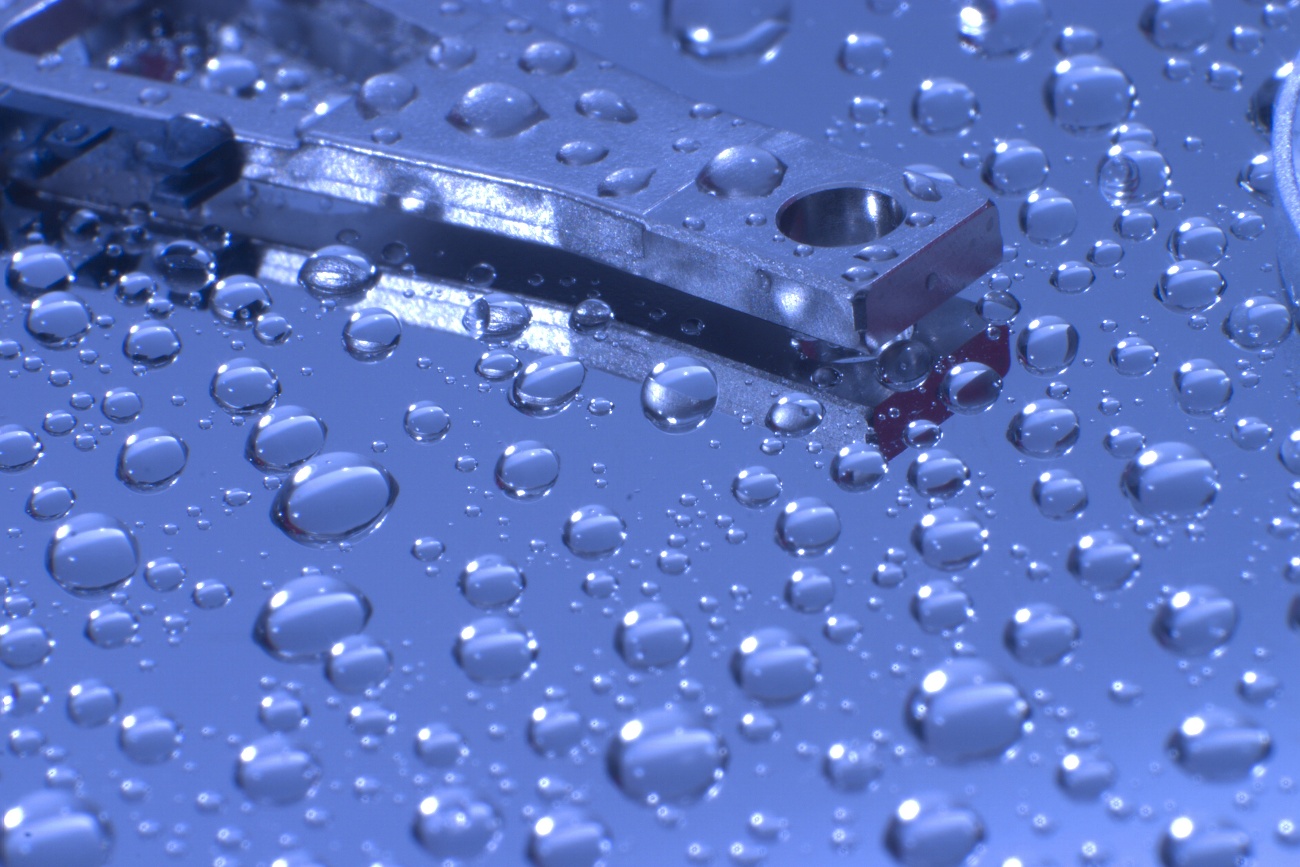How to Understand Moisture Meter Readings for Accurate Results

Moisture meters are crucial tools for many different professionals. From agriculture, to lumber manufacturing, to water damage restoration, to construction, there are many applications that rely heavily on moisture testing to produce optimal end results. However, to get the best testing results, it’s important to understand moisture meter readings—how they work, what impacts test results, what the different moisture reading scales mean, and how to ensure the most accurate results possible.
Here is a bit of information to help you better understand moisture meter readings:
How Moisture Testing Works
Understanding how a moisture meter works is crucial for understanding moisture meter readings and what can affect them.
There are two primary methods by which moisture testing in solid materials works:
- Electrical Resistance Moisture Testing. This method uses a pair of electrodes that are inserted into the material being tested. Then, an electric current is generated—one which uses the material being tested to complete the circuit. The resistance to the flow of electricity from one electrode to the other is used to measure the moisture content of the material being tested, which is then translated into a moisture meter reading. Because water is a conductor, less resistance means that there is more moisture present in the material, more resistance means there is less moisture. This is the moisture testing method used by pin-type moisture meters.
- Electromagnetic Frequency Scanning. This method uses an electromagnetic radio wave to pass through a solid material to “scan” for the presence of moisture. When the radio wave returns, the moisture meter checks the distortions in the wave to estimate the moisture. This is the moisture testing method used by pinless moisture meters.
Each of these two moisture testing methods has their own unique strengths and weaknesses. For example, pinless moisture meters are typically faster and easier to use than pin meters; they also can scan large areas in less time. However, pinless meters require a flat, solid surface to work properly—if the scanning plate cannot make smooth contact with the surface of the material being checked, the meter’s accuracy will be reduced.
Pin meters, on the other hand, are better able to determine the distribution of moisture throughout a material sample from the shell to the core and can be used in materials with curved or uneven surfaces. However, they’re somewhat slower at testing moisture over large areas and the pins/electrodes may be prone to breaking when forced (though most meters make replacing broken pins easy).
What are Moisture Reading Scales?
Different materials will have physical properties that make them react differently when tested with a moisture meter. For example, wood has a different level of electrical resistance than drywall—this will affect how a moisture meter gauges the amount of moisture each material possesses.
So, a moisture meter is usually calibrated to provide accurate, quantitative results in a specific kind of material. The type of material the moisture meter is calibrated for is usually referred to as the meter’s moisture reading scale. In other words, a moisture meter calibrated for wood is said to have a wood moisture reading scale, whereas a meter calibrated for drywall has a drywall moisture reading scale.
However, not all moisture meters have a reading scale optimized for a specific material. These moisture meters have what is called a “reference” moisture reading scale. These meters provide a qualitative, or estimated, assessment of the moisture content of a material.
Why would someone want to use a reference moisture reading scale instead of a more specific (and accurate) one? Part of the reason is that there aren’t set moisture reading scales for some materials. For example, concrete does not have a true, quantitative moisture reading scale because the mix used to make concrete can vary too much from one batch to the next. This leads to inconsistencies that make it almost impossible to reliably assess the moisture content of concrete directly.
Another reason could be that, while not particularly accurate, reference scale moisture testing can provide a quick pass/fail assessment of moisture content.
Pro Tips for Measuring Moisture with a Reference Scale Moisture Meter
When using a reference scale moisture meter, it can be helpful to take a moisture reading from a sample of material that you know is dry before conducting further tests. This gives you a comparison point for future reference—allowing you to more reliably identify moisture-compromised materials.
Additionally, when using a reference scale meter, it’s important to remember that the number provided isn’t an exact measurement of the moisture content of the material being tested. Reference scales can have arbitrary number ranges such as 0-255, 0-300, or 0-100. However, even for a reference scale meter with a 0-100 range, the number provided is not an absolute, percentage-based indication of moisture content.
What Can Affect the Accuracy of a Moisture Content Measurement?
There are several things that can impact moisture meter accuracy—and different types of moisture meters may be affected differently.
Some examples of things that can impact the accuracy of moisture testing include:
- The condition of the meter;
- Whether the meter is in the correct reading scale mode;
- The temperature of the material being tested (for pin meters);
- Whorls in wood or other flaws that affect material density (for pinless meters); and
- Moisture on the surface of a material being tested.
Why and how do these factors affect moisture meter readings?
How the Condition of the Moisture Meter Impacts Reading Accuracy
Damage to a moisture meter can have a significant impact on the meter’s accuracy. For example, a dented or scratched scanning plate on a pinless moisture meter can keep the meter from making smooth contact with the surface of the material being tested. This throws off the moisture reading’s accuracy. Broken or rusted contact pins might not conduct electricity as readily—increasing resistance so materials read as being drier than they actually are.
Another issue with a moisture meter’s condition that can impact accuracy is a moisture meter having low batteries. Weak batteries can prevent the meter from functioning correctly, and trying to use a meter with depleted batteries can even cause permanent damage to the meter over time.
Making Sure the Meter is in the Correct Moisture Reading Scale
Some higher-end moisture meters may have the ability to switch between different moisture reading scales. However, as convenient as this feature is, it can lead to some erroneous readings if the user keeps the meter in the wrong reading scale when testing other materials.
Part of knowing how to understand moisture meter readings to get accurate results is understanding the capabilities of the meter itself and ensuring the meter is in the correct reading mode. So, before starting work on any moisture testing task, be sure to check what reading mode the meter is in.
Additionally, for wood moisture meters, it’s important to check if there is a species correction feature for the meter. Different types of wood can have different physical properties that might alter the results of a moisture measurement. Applying a wood species correction to the moisture test results is necessary for ensuring accurate readings. Like with moisture reading scales, it’s important to check that the appropriate species correction is applied before starting to test for moisture in wood.
How Extreme Temperatures Can Impact Moisture Readings for Pin Meters
Because pin meters work on the principle of electrical resistance, the current temperature of the material being tested can have a significant impact on the accuracy of moisture testing. At higher temperatures, the electrical resistance of a material decreases. At lower temperatures, the resistance of a material increases.
In most cases, this isn’t a major issue. A pin moisture meter will remain accurate between temperatures of 50 to 90 degrees Fahrenheit (10 to 32.2 degrees Celsius). Outside of this range, however, a temperature correction may need to be applied to the moisture testing results.
Pinless meters aren’t generally affected by extreme temperatures, unless the material being tested is frozen solid.
How Flaws in Materials Can Affect Pinless Moisture Meter Readings
While pinless moisture meters aren’t as susceptible to inaccuracy from changes in material temperature, they can be affected by flaws in a material. Why would flaws in the material being tested matter? Because the electromagnetic frequencies used to scan the material in question use distortions in the radio wave to measure moisture content in building materials.
Flaws in a material, such as whorls in wood or air pockets in poured flooring, affect that material’s specific gravity (SG) value. Because pinless meters are calibrated using specific gravity as the standard for measurement, random changes in SG for a material can impact the accuracy of their moisture readings.
So, when testing different building materials, it’s important to check for these kinds of flaws. By identifying the flaws, it is possible to mark them down and account for their effect on moisture meter accuracy.
How Surface Moisture Skews Moisture Testing Results
A final major factor that can affect the accuracy of moisture meter readings is the presence of water on the surface of an object. With pin meters, the standing water on the top of a piece of wood can cause the electrical current to be routed through the water instead of the material being tested. With pinless meters, surface moisture can spoil the contact between the meter and the material being tested.
In either case, the accuracy of the meter is impacted.
There are two ways of dealing with this issue:
- Cleaning up the excess water before testing; and
- Using a pin meter with insulated pins.
A moisture meter with insulated pins will only release electricity from the tips of the electrodes. This helps to prevent the electricity from escaping from the base of the electrodes and passing through the water. As a side note: Insulated pins are also excellent for determining the distribution of moisture between the shell and core of a material sample.
Checking the Accuracy of Moisture Meter Readings
Over time, a moisture meter may, through repeated use or accidental damage, fall out of calibration and start generating erroneous moisture testing results. Because of this fact, it’s important to test the accuracy of a moisture meter before putting it to use.
There are a few ways to check moisture meter accuracy, including:
- Using a Second Moisture Meter to Check Moisture Testing Results. Some people use a second “reference” meter to check against the moisture testing results provided by the first meter. However, this method of checking meter accuracy is problematic because it takes time, requires a second meter that is identical to the first, and is less reliable than the following two methods.
- Using a Moisture Meter Testing Device. Some manufacturers make moisture content standards (MCSs) or sensor blocks for testing the accuracy of their moisture meters. With pin meters, MCS devices provide a spot to tap the pins to—this completes a circuit with a preset level of resistance. For pinless meters, sensor blocks are samples of material that are designed to return a precise moisture content measurement when the meter is used on it. Both of these external accuracy checking devices have to be specifically manufactured for the moisture meters they’re meant to be used with—otherwise, the accuracy of the test suffers.
- Built-in Calibration Checks. Some top-of-the-line moisture meters have built-in calibration tests where all the user has to do is push a button and they get instant verification of the moisture meter’s accuracy. These are the most convenient meter accuracy checks available since they don’t require extra tools for the test.
Need more help with how to understand moisture meter readings? Speak to a moisture meter specialist from Delmhorst!
Subscribe to Our Blog
Post Related

5 Tips for Accurately Using a Restoration Moisture Meter


